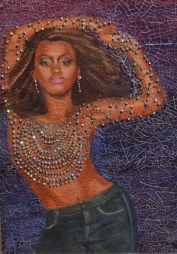
Painting “Breakthrough”

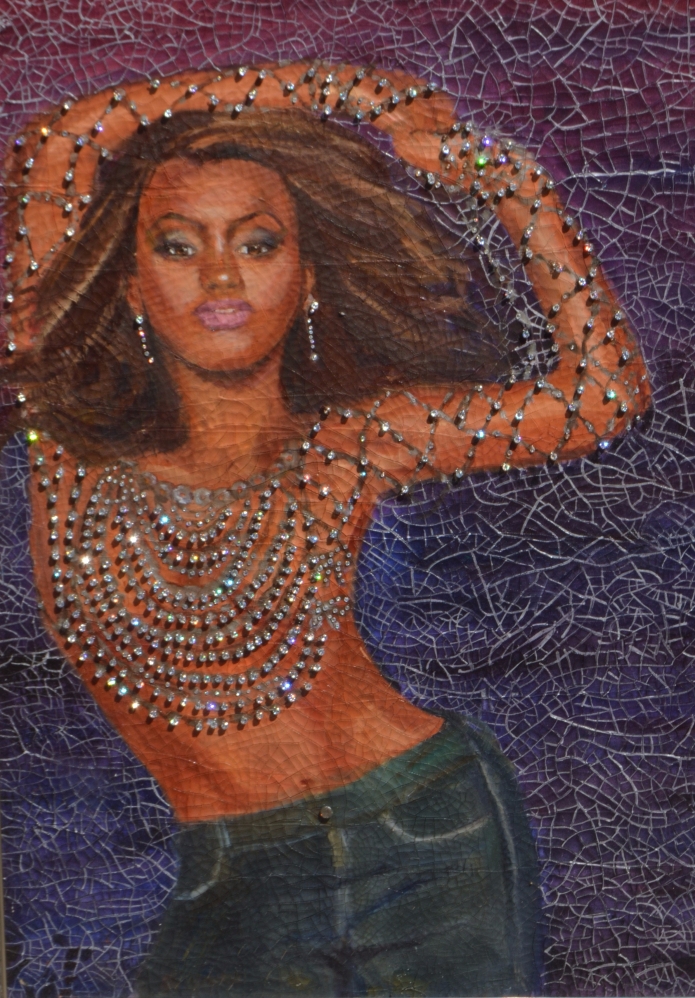

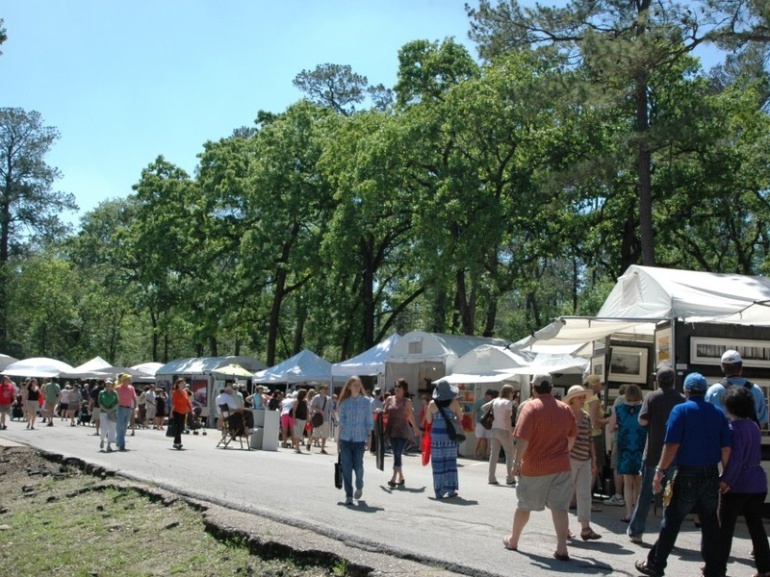
The weather was beautiful as droves people in waves walked the trail along Memorial Park. It felt good having the warm sun guide the path to the Bayou City Art Festival (Bayou Fest). Twice a year this event is held, showcasing amazing art from juried, national, and international artists. Over 30,000 people came this year, & for the first time it featured the younger artists (age 11 & up) in art competitions. People love to go to find original art at the best deals, have fun with friends & be a part the Houston lively art scene. However, I go on a research mission, wanting to discover & learn what it takes to be a juried winner & go on tour to different festivals all over the U.S. (& World). And the best way to find answers for a self-taught artist is to learn from those who already achieved those big dreams. I know there are others just like me. If you weren’t able to go, these are the 5 things I learned from going to the festival this year.
Overall, it was a wonderful experience. I had an amazing day in the park, saw a tremendous amount of art. Though I did not eat, felt really full from all the valuable information! I really enjoy learning about the most thriving artist environments, and always take notes on everything. You see my reports monthly online, and hope it enlightens others who are also extremely artistic, but never know how to break through into the professional art business. May we grow on this journey together and never stop learning new skills. For now, signing off, take care and have a blessed week.
Sincerely,
Angela S.
Art Blogger/Emerging Visual Artist
Follow work on fb/twitter/instagram: TheArtofAngela
P.S. If you have any art events or workshops coming up in the Houston area, & would like for me to write a review, please contact via email at artofangela@outlook.com
The most difficult aspects of being an artist , ironically, is not painting, or getting enough exposure. It’s finding funding, covering expenses, and getting into more prestigious establishments. An essential requirement to survive is learning how to write an art proposal. Art proposals provide funding through grants for large art projects, as well as get into career- advancing events. In Houston, right now, it’s open call season for exhibition proposals to prominent places such as Project Row House, Fresh Arts in Winter Street Studios, and Lawndale Art Center.
So what do you do if you are a self-taught artist and the thought of writing one seems overwhelming? What special wording are all the judges and curators looking for? How can you avoid being disqualified and rejected? And most importantly, how do you personalize everything to reflect on your art work?
For me, those answers could not be found on google, or through any art manual at the bookstore. I discovered, through Facebook (by coincidence), Fresh Arts was conducting a How to Write an Effective Art Proposal Workshop. It included the panel of judges from Project Row House (Ryan Dennis), Fresh Arts (Sarah Schellenburg), Lawndale Art Center (Dennis Nance) which discussed everything for only $10 ($5/members)! It took place this past Wednesday at Winter Street Studios. I feel sorry for those who could not make it, and want to share the tips I learned last week.
An effective proposal is broken down into 4 parts:
Part 1: the Core is the most important aspect, it should state a subject matter, include if it came from a story (with reference), and if someone came into your studio to see this work, could you guess what their first questions would be? Why are you making it? What are you conveying to the viewer?
Part 2: Included is what would be included in the exhibition. What’s the medium of the main components to your project? (Projection, dance, sound, painting, sculpture, etc.) What would happen during performances? Who are your collaborators, and would you want to give an artist talk or host a special event?
Part 3: The tools is writing out in details your budget, listing everything needed, equipment, manpower moving trucks, framing, installations, televisions, projectors, everything down to the little details (extension cords, screws, sound system, etc.) the dollar budget, and timeframe you hope to have everything accomplished by
Part 4: The fit, does this really align with the mission of the presenting organization or space? This is very important to more organizations, and it should also be important to you too. Try not to apply to every exhibition. You will burn out quickly, and lose the authenticity (meaning & purpose) to why you are doing this in the first place. Ask yourself what are your goals, and how can showing here take me in the direction I want to go in my career. And if your mission is in sync with theirs it also increases your chances to getting accepted.
The panel spoke that when they reject a proposal, it may not be they don’t like it, some they actually love. But why do they reject? I learned from the judges that art proposals that got rejected were mostly based on presentation. They do not require a perfectly written novel just a page that shows your idea clearly. To avoid confusion, use proper punctuation, write in complete sentences, use terminology (wording) that everyone can understand. Writing a couple of rough drafts helps increase clarity and reading a loud proposals to friends can help you spot errors before submitting the final copy will prevent possible rejection. Avoid attaching dark, grainy pictures. Provide quality reference pictures of your art work. And if you are still rejected, it is not because your art work stinks (Really?).
It’s may be because:
Overall, the workshop was excellent, it provided a nurturing environment that every artists: rookie, emerging, mid-career, and professional artists could actually grow from. My favorite part was hearing responses from the panel of judges, especially in regards to the past selected winners, and getting a plethora of information on how to get started. The only critic would be the time, I hope this workshop gets offered more than once, so I could recommend it to more artists! Also recommend if Fresh Arts could print out an information booklet opposed to email. It could be a best seller because it contained everything under the kitchen sink to art proposals- nearly 100 pages of slides, listing of all the venues with their contact information, deadlines, grants, photographers, & even tips from professional art consultant Cary Reeder.
I really enjoy learning about the most thriving artist environments, and always take notes on everything. You see my reports monthly online, and hope it enlightens others who are also extremely artistic, but never know how to break through into the professional art business. May we grow on this journey together and never stop learning new skills. For now, signing off, take care and have a blessed week.
Sincerely,
Angela S.
Art Blogger/Emerging Visual Artist
Follow work on fb/twitter/instagram: TheArtofAngela
Recently, I went on a journey of self-discovery in the arts. I learned a mandatory requirement at different galleries is having an art statement with your work. An artist statement is an artist’s written description of their work. The brief verbal representation is and in support of, his or her own work to give the viewer understanding. As such it aims to inform, connect with an art context, and present the basis for the work; it is therefore didactic, descriptive, or reflective in nature (from Wikipedia). The definition sounds very confusing to me and I am mostly self-taught. So what do you do if you are a gifted artist, but not so keen on the grammar and formality of it all? So I ventured to Winter Street Studios to see the How to Write a Great Artist Statement workshop hosted by Fresh Arts, & instructed by Elizabeth White-Olsen (founder of Writespace).
Overall, I heard a lot of buzz from others that this was an eye opening experience. In two hours, we were able to get a sample of what we needed to get done. My friends & I wished it could have been an all-day workshop, bringing a laptop, collection of our art work, breaking into the same teams, and coming out with completed statements to submit to the galleries the same day. However, I don’t think that’s the purpose of what the facilitators (Fresh Arts & Writespace) were trying to accomplish. This experience was just to get our feet wet & to think for ourselves. And also learned we can email Elizabeth our mission statements, & can schedule more workshops or a one-on-one art consultations for all aspects of written artist work (biographies, proposals, and more) And that what made the entire experience extremely helpful. Whitespace is founded by Elizabeth White-Olsen, it’s a creative arts non-profit group that offers onsite and online writing workshops, manuscript consultations, and editing services that started May of last year. And Fresh Arts is a non-profit group that hosts career-building art workshops, as well as exhibitions, performances, art salons and more.
I really enjoy learning about the most thriving artist environments, and always take notes on everything, which mostly goes unpublished until now. I discovered a new talent and that’s writing savvy art blogs on different adventures all over Houston. You see my reports monthly online, and hope it enlightens others who are also extremely artistic, but never know how to break through into the professional art business. May we grow on this journey together and never stop learning new skills (even if you reach the top). For now, signing off, take care and have a blessed week.
Sincerely,
Angela S.
Art Blogger/ Emerging Visual Artist
Follow work on fb/twitter/instagram: TheArtofAngela
One of my new years resolutions was to find my purpose & direction in my art work & also know my true value. I got the answers I needed & these were my impressions from yesterday’s Critique Night at at the Visual Art Alliance at the Art Supply on Main.
1. Know Art is like exposing a part of your soul, your mindset, & its a really naked feeling being judged. I was insecure but They were really supportive from the very beginning, & although i didn’t know many people, it didn’t feel like it. It really wasn’t intimidating to show art work there and also give feedback.
2. They took it with the sandwich method positive meat (constructive criticism) and end on a positive note. Which is better for artists who always hear “your work is amazing” & never really know what to improve on with friends and family. And the criticism is similar to college, very analytically and direct on what needs to change.
3. It’s welcome to any artists. There were people from all ages there (the youngest 13) & all types (abstracts, surrealism, etc) both students and professionals and they broke a personal record last night by having 12 showings in 2 hours. And often a curator is there to guide the way.
4. Learned about how much the organization can help, & promote. Exposes you to different galleries, workshops, etc. And Whenever anyone does a show, they will announce it in many ways through newsletters, social media, will come support & as a member get a webpage, and discounts. By joining a committee, you learn more as well on business practices for artists, how to hang art work, etc. by helping them it also helps you grow.
5. Learned 2 of the deepest impressions of the night, that answered everything.
“Your art work is really good, but its your confidence that needs improving believing in yourself & that you already are a pro artist sets a mindset, adds value & to find your purpose what direction to go is based on happiness, what’s the 1 thing/subject you can work on for the rest of your life, that gives you passion, and joy. And by answering that question you will know the direction you need to follow” -Leticia Frankio
“Your class at Painting Place should be very happy by your work. You have improved a lot, you are good, but you need to start working on this 5 times a week and love your concept behind 1 piece in particular (“Aqua”) storm on heels, you should go back to some of your original work, and repaint them. It adds more emphasis, and will show you’ve grown even more.” -Mark Adams, Curator
Now to get back to work (really!) Feel back aligned, recharged and refocused. You’ll be seeing more of my work soon!
Sincerely,
Angela S.
Art Blogger/Emerging Visual Artist
Follow work on fb/twitter/instagram: TheArtofAngela
1. Define your purpose.
Create a plan of action and start working toward it immediately.
2. Create a “master-mind alliance.”
Contact and work with people who have what you haven’t.
3. Go the extra mile.
Doing more than you have to do is the only thing that justifies raises or promotions, and puts people under an obligation to you.
4. Practice “applied faith.”
Believe in yourself and your purpose so fully that you act with complete confidence.
5. Have personal initiative.
Do what you have to without being told.
6. Indulge your imagination.
Dare to think beyond what’s already been done.
7. Exert enthusiasm.
A positive attitude sets you up for success and wins the respect of others.
8. Think accurately.
accurate thinking is the ability to separate facts from fiction and to use those pertinent to your own concerns or problems.
9. Concentrate your effort.
Don’t become distracted from the most important task you are currently facing.
10. Profit from adversity.
Know that there is an equivalent benefit for every setback
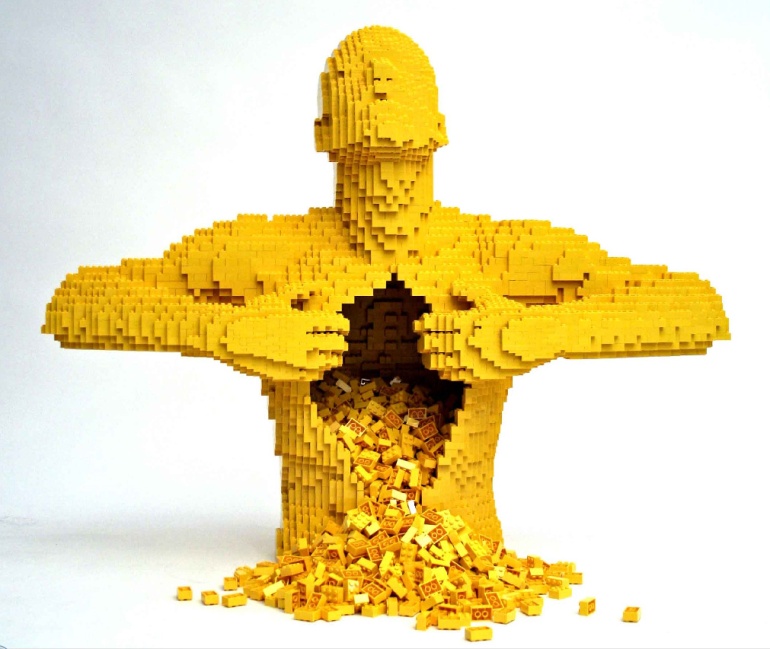
Occasionally, we all suffer from an severe drought, called an art block. Noticed that these 5 thoughts kill creativity
1)I am not talented enough
2) I am not as good as I want to be
3)I am not as good as other people expect me to be.
4) There is no point in creating art because there are so many other people out there creating art better than mine.
5) I’ll probably never be good enough to become a professional anyway, so why bother?
If you find yourself thinking any of these, you’ll have to find a way to change your attitude. Dealing with an art block can be devastating, but it doesn’t have to be. Artist who do not do work for years are following results of negative criticism, devastating life experience, and/or boredom with the current activity. All internal issues. Its happened to me many times, but now I can work on art every day, no real problem. To adapt to boredom, I change my craft depending on the mood, (Ex: Some days I draw-face paint-decorate jewelry-canvas paint-learn to airbrush-sew-cake decorate-write poetry, stories, cards, etc). Or force myself to schedule parties, events, and workshops cause that seems a motivation and urgency to get the job done. Those many things are confidence builders, cause there’s no defining my limitations. All involve that creative spirit. Criticism comes with every talent, and not doing some things better than others, goes back to having faith that not right now I can do those things, but the day is coming soon when I can. So I practice, & visiting other art galleries is inspiring, reading different style of art books, & talking to other artists is therapeutic cause they face the same challenges. Dealing with an art block can be devastating, but it doesn’t have to be! Just attempt to get started, ignore the setbacks and creativity will always make a comeback.
Sincerely,
Angela S.
Art Blogger/ Emerging Visual Arts
Follow work on fb/twitter/instagram: TheArtofAngela
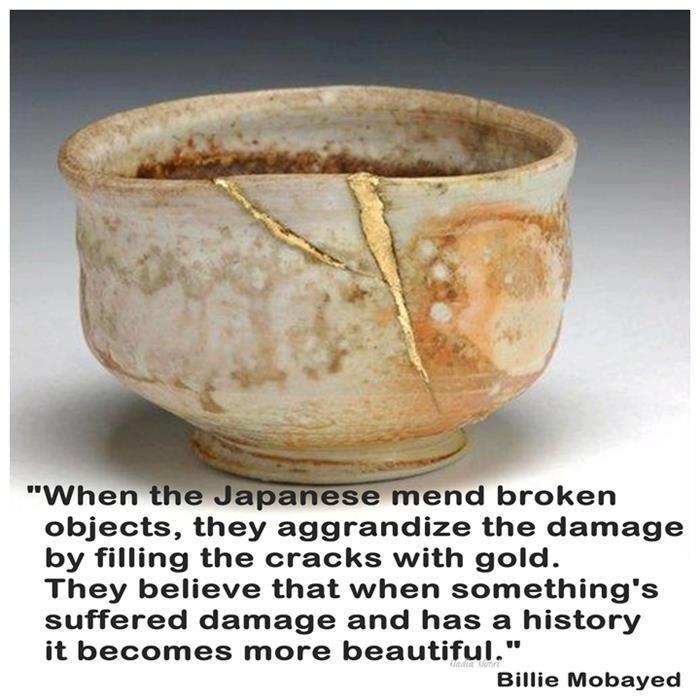
There’s an old story about two pots. One was perfect in every way. The other had cracks and broken places. Each day a woman filled the pots with rainwater she had collected and then carried them down the path to her home. The first pot felt proud that she never spilled a single drop. The other felt ashamed because no matter how hard she tried, she lost a lot along the way. One day the pots overheard the woman talking with someone who lived nearby. The neighbor exclaimed, “The flowers along your bath are so beautiful. What is your secret?” The woman answered, “One of my pots is broken, and the water that spills out helps the flower grow every day.”
That story reminds me of a recent situation. During that time my pain seemed especially pointless. I also felt concern that nothing good would ever come of it. Lord, I silently prayed, how can you even use me when I’m so broken? As I paused and considered that question, the song above came onto the radio “By his wounds”. When the music ended, I began to develop a new perspective on my hurt. I realized that through Christ wounds we are healed and because He lives in us, our wounds can bring healing to others too. We think that we have to take what’s broken and make it perfect in order to be used by God and bless others. God thinks in a completely different way, however. He took what was perfect, His Son and made Him broken in order to bring us healing. If you’re sitting there wondering if God can use you because your life is not as it should be and your heart is aching, know that your greatest hurt will probably be your greatest ministry. Like the disciple Thomas (John 20:27-28), who doubted until he touched the visible wounds on Jesus in order to believe, some people in your life need to see your broken places more than your victories. And it could change their life. We’re all like the second pot in the story. God sees purpose in our brokenness even when we don’t, and He can use it to bring forth beauty that blesses those around us.
Original Post From 12/7/2011
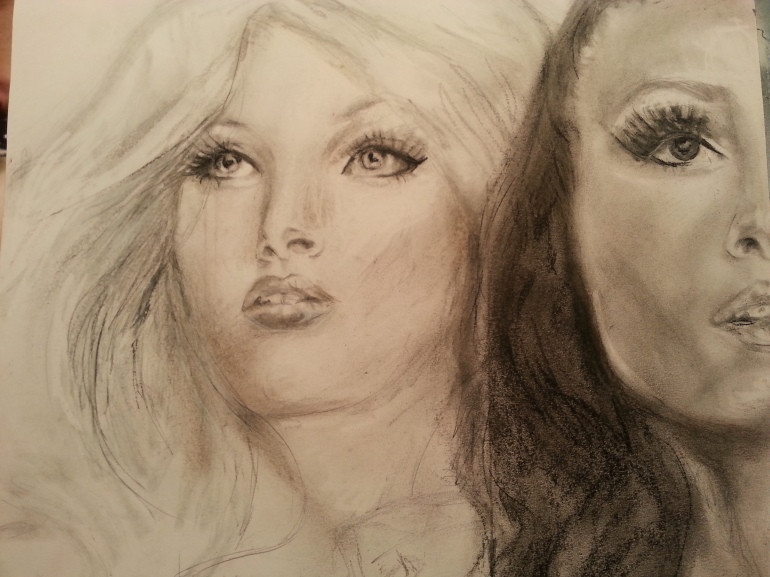
“A story is told of two friends who were walking through the desert. During some point of the journey they had an argument, and one friend slapped the other one in the face.
The one who got slapped was hurt, but without saying anything, wrote in the sand:
TODAY MY BEST FRIEND SLAPPED ME IN THE FACE.
They kept on walking until they found an oasis, where they decided to take a bath. The one who had been slapped got stuck in the mire and started drowning, but the friend saved him.
After he recovered from the near drowning, he wrote on a stone:
TODAY MY BEST FRIEND SAVED MY LIFE.
The friend who had slapped and saved his best friend asked him, “After I hurt you, you wrote in the sand and now, you write on a stone, why?”
The other friend replied “When someone hurts us we should write it down in sand where winds of forgiveness can erase it away. But, when someone does something good for us, we must engrave it in stone where no wind can ever erase it.”
Post from May 3, 2010
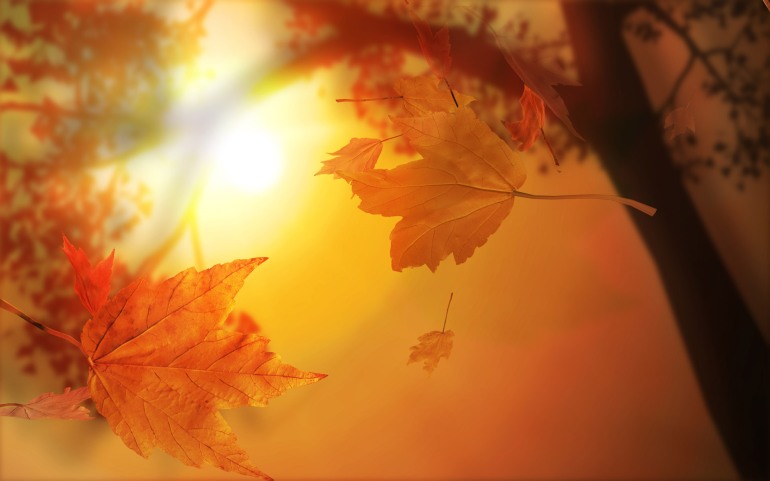
Spring had passed. So had Summer. Freddie, the leaf, had grown large. His mid section was wide and strong, and his five extensions were firm and pointed. He had first appeared in Spring as a small sprout on a rather large branch near the top of a tall tree.
Freddie was surrounded by hundreds of other leaves just like himself, or so it seemed. Soon he discovered that no two leaves were alike, even though they were on the same tree. Alfred was the leaf next to him. Ben was the leaf on his right side, and Clare was the lovely leaf overhead. They had all grown up together. They had learned to dance in the Spring breezes, bask lazily in the Summer sun and wash off in the cooling rains.
But it was Daniel who was Freddie’s best friend. He was the largest leaf on the limb and seemed to have been there before anyone else. It appeared to Freddie that Daniel was also the wisest among them. It was Daniel who told them that they were part of a tree. It was Daniel who explained that they were growing in a public park. It was Daniel who told them that the tree had strong roots which were hidden in the ground below. He explained about the birds who came to sit on their branch and sing morning songs. He explained about the sun, the moon, the stars, and the seasons.
Freddie loved being a leaf. He loved his branch, his light leafy friends, his place high in the sky, the wind that jostled him about, the sun rays that warmed him, the moon that covered him with soft, white shadows. Summer had been especially nice. The long hot days felt good and the warm nights were peaceful and dreamy. There were many people in the park that Summer. They often came and sat under Freddie’s tree. Daniel told him that giving shade was part of his purpose.
“What’s a purpose?” Freddie had asked.
“A reason for being,” Daniel had answered. “To make things more pleasant for others is a reason for being. To make shade for old people who come to escape the heat of their homes is a reason for being. To provide a cool place for children to come and play. To fan with our leaves the picnickers who come to eat on checkered tablecloths. These are all the reasons for being.”
Freddie especially liked the old people. They sat so quietly on the cool grass and hardly ever moved. They talked in whispers of times past. The children were fun, too, even though they sometimes tore holes in the bark of the tree or carved their names into it. Still, it was fun to watch them move so fast and to laugh so much.
But Freddie’s Summer soon passed. It vanished on an October night. He had never felt it so cold. All the leaves shivered with the cold. They were coated with a thin layer of white which quickly melted and left them dew drenched and sparkling in the morning sun. Again, it was Daniel who explained that they had experienced their first frost, the sign that it was Fall and that Winter would come soon.
Almost at once, the whole tree, in fact, the whole park was transformed into a blaze of color. There was hardly a green leaf left. Alfred had turned a deep yellow. Ben had become a bright orange. Clare had become a blazing red, Daniel a deep purple and Freddie was red and gold and blue. How beautiful they all looked. Freddie and his friends had made their tree a rainbow.
“Why did we turn different colors,” Freddie asked, “when we are on the same tree?”
“Each of us is different. We have had different experiences. We have faced the sun differently. We have cast shade differently. Why should we not have different colors?” Daniel said matter-of-factly. Daniel told Freddie that this wonderful season was called Fall.
One day a very strange thing happened. The same breezes that, in the past, had made them dance began to push and pull at their stems, almost as if they were angry. This caused some of the leaves to be torn from their branches and swept up in the wind, tossed about and dropped softly to the ground. All the leaves became frightened.
“What’s happening?” they asked each other in whispers.
“It’s what happens in Fall,” Daniel told them. “It’s the time for leaves to change their home. Some people call it to die.”
“Will we all die?” Freddie asked.
“Yes,” Daniel answered. “Everything dies. No matter how big or small, how weak or strong. We first do our job. We experience the sun and the moon, the wind and the rain. We learn to dance and to laugh. Then we die.”
“I won’t die!” said Freddie with determination. “Will you, Daniel?”
“Yes,” answered Daniel, “when it’s my time.”
“When is that?” asked Freddie.
“No one knows for sure,” Daniel responded.
Freddie noticed that the other leaves continued to fall. He thought, “It must be their time.” He saw that some of the leaves lashed back at the wind before they fell, others simply let go and dropped quietly. Soon the tree was almost bare.
“I’m afraid to die,” Freddie told Daniel. “I don’t know what’s down there.”
“We all fear what we don’t know, Freddie. It’s natural,” Daniel reassured him. “Yet, you were not afraid when Summer became Fall. They were natural changes. Why should you be afraid of the season of death?”
“Does the tree die, too?” Freddie asked.
“Someday. But there is something stronger than the tree. It is Life. That lasts forever and we are all a part of Life.”
“Where will we go when we die?”
“No one knows for sure. That’s the great mystery!”
“Will we return in the Spring?”
“We may not, but Life will.”
“Then what has been the reason for all of this?” Freddie continued to question. “Why were we here at all if we only have to fall and die?”
Daniel answered in his matter-of-fact way, “It’s been about the sun and the moon. It’s been about happy times together. It’s been about the shade and the old people and the children. It’s been about colors in Fall. It’s been about seasons. Isn’t that enough?”
“That afternoon, in the golden light of dusk, Daniel let go. He fell effortlessly. He seemed to smile peacefully as he fell. “Goodbye for now, Freddie,” he said.
Then, Freddie was all alone, the only leaf on his branch. The first snow fell the following morning. It was soft, white, and gentle; but it was bitter cold. There was hardly any sun that day, and the day was very short. Freddie found himself losing his color, becoming brittle. It was constantly cold and the snow weighed heavily upon him.
At dawn the wind came that took Freddie from his branch. It didn’t hurt at all. He felt himself float quietly, gently and softly downward. As he fell, he saw the whole tree for the first time. How strong and firm it was! He was sure that it would live for a long time and he knew that he had been part of its life and made him proud.
Freddie landed on a clump of snow. It somehow felt soft and even warm. In this new position he was more comfortable than he had ever been. He closed his eyes and fell asleep. He did not know that Spring would follow Winter and that the snow would melt into water. He did not know that what appeared to be his useless dried self would join with the water and serve to make the tree stronger. Most of all, he did not know that there, asleep in the tree and the ground, were already plans for new leaves in the Spring.